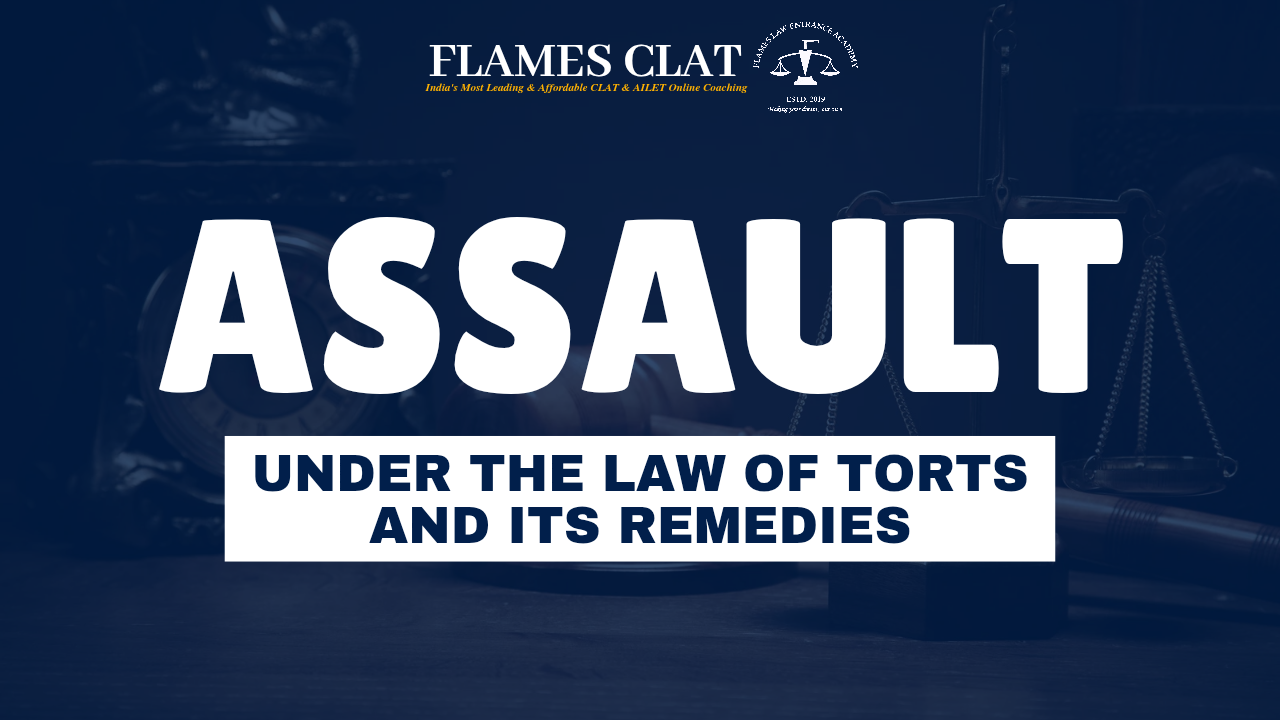Assault under the law of torts and its remedies
What is law of torts?
The term 'tort' is of French in origin which is synonym to 'wrong' in English version. This word has originated from the Latin word 'tortus' which means to twist and implies conduct which is tortious or twisted.
The concept of tort is discussed where a breach of any duty is caused which is independent of implied contract giving rise to a civil cause of action and for which compensation can be claimed and a damage is recoverable.
Many authors have given torts different definitions but it is still considered as a growing concept.
According to Salmond and Heuston,”A tort is a 'civil wrong for which the remedy is a common law action for unliquidated damages, and which is not exclusively the breach of a contract or the breach of a trust or other merely equitable obligation.”
Essentials of torts
- A wrongful act or an omission by a person.
- The act must result in legal damage to another person.
- The nature of the act must give rise to legal remedy of the damages by the act done.
Examples of torts
Examples of torts include assault, battery, defamation, negligence, trespass, and nuisance etc.
Assault under law of torts:
- Assault can be defined as an act done with an intent to cause a reasonable apprehension of imminent harm to another person.
- Assault does not require an actual physical contact to complete the act.
- It is the threat or attempt to cause such contact that completes the tort.
Essential elements of assault:
To establish assault following elements must be proven:
- Intention to cause hurt:
The person must have intent to cause fear to another person.
It must be done intentionally not accidentally.
- Reasonable fear:
One should genuinely feel the threat of getting hurt.
A normal person in this situation would also be scared.
- Immediate threat:
Fear must be immediate and not of afterwards or future.
The danger should be felt instant.
- The person must look capable of causing hurt:
The person must look like he/she can actually do the act they are threatening of.
- Awareness of threat:
One must be aware of threat when it happens.
If the act goes unnoticed it will not be accounted as assault.
Legal defenses to assault:
- Consent:
If the plaintiff has given consent for the act, the defendant may not be liable for assault.
- Self-defense:
The defendant may take the defense of self-defense and argue that their actions were a reasonable response to an imminent threat against themselves.
- Intoxication:
Intoxication can be a legal defense in cases where it affects a person’s ability to act intentionally.
- Lack of evidence/proof:
If the elements of proof are not present to support assault or supported with correct evidence it can serve as a legal defense.
Remedies to assault:
- Action for damages:
If the plaintiff has been detained wrongfully, he can always bring action to claim damages. Compensation may not only be claimed for the injury suffered but also for the humiliation caused by the act.
- Self-help:
It is a remedy available to a person who is still in detention which allows them to set them free without waiting for any legal actions.
- Habeas Corpus:
It is a faster remedy for procuring the release of a person detained under the charges of assault, this writ is maintainable by Article 32 for Supreme Court and by Article 226 for High Courts given under The Constitution of India. Through this writ the detaining person has to present and justify the reasons for detention of the person detained in-front of the court.
Landmark Cases:
- Stephen V. Mayers (1830):
This case showed that a person can be guilty of assault even if they’re stopped before actually hurting someone because just moving forward with the clear intention to cause harm is enough to make the other person feel threatened.
- Bavisetti Venkata Surya Rao V. Nandipati Muthayya (1964):
In this case, the court said that even if no physical harm is done, an act can still count as assault if it’s threatening enough to make the other person genuinely fear that they’re about to be hurt right away.
- R V. Ireland (1998):
This case broadened the meaning of assault by holding that even a silent phone call can amount to assault if it causes a person to reasonably fear immediate harm. The court made it clear that it's not about physical contact or spoken threats it's about the fear and anxiety the action creates in the mind of the victim.
- Fagan V. Metropolitan Police Commissioner:
In this case, the court made it clear that assault isn’t just about accidents it has to involve a conscious choice. At first, Fagan may not have meant to hurt the police officer, but once he realized the wheel was on the officer’s foot and chose not to move it, that deliberate refusal turned it into an assault. It showed that what matters is the intention behind the action, not just how it started.
Conclusion:
Assault, as recognized under the law of torts, is not confined to physical harm alone it is rooted in the fear and apprehension caused by the defendant’s actions. Through various case laws and evolving interpretations, it’s clear that even silent gestures or inaction, if done with intent and awareness, can amount to assault. The emphasis lies on the mental impact on the victim and the immediate threat perceived. What may seem minor at first glance could have serious legal consequences if it causes a reasonable fear of harm. Defenses like consent, self-defence, and lack of intent offer protection where the accused acted within limits. Remedies such as damages, self-help, and writs like habeas corpus ensure that victims have accessible paths to justice. As society evolves, so does the understanding of personal safety and dignity and tort law continues to adapt to ensure these values are upheld. In the end, assault under tort law is not just about punishing threats, but about recognizing and restoring a person’s sense of safety and respect.
Join our Flames CLAT Family at https://t.me/flamesclat
For Informative videos, do check out https://youtube.com/@flamesclat?si=-PqiaRLEjutM-iYj




Write a Review
Your email address will not be published. Required fields are marked *